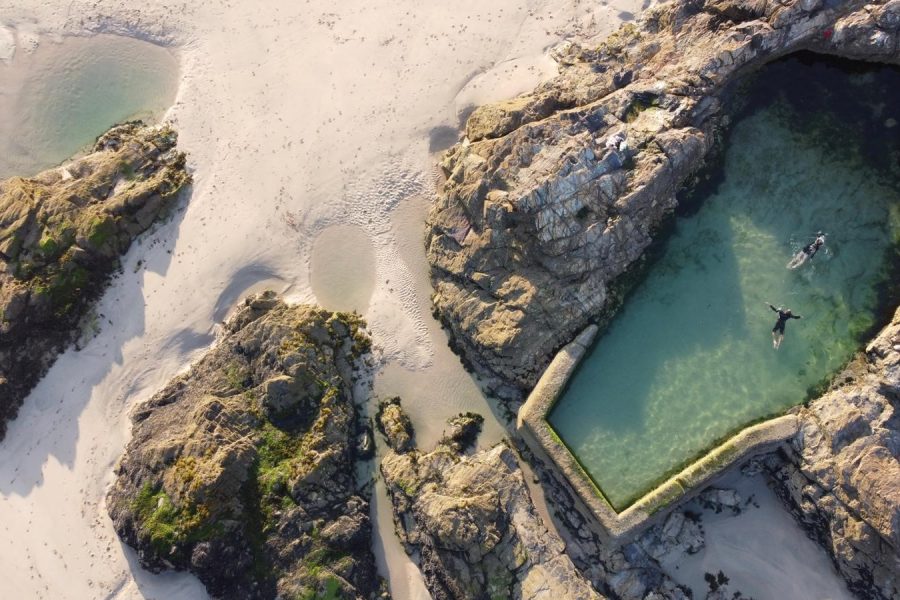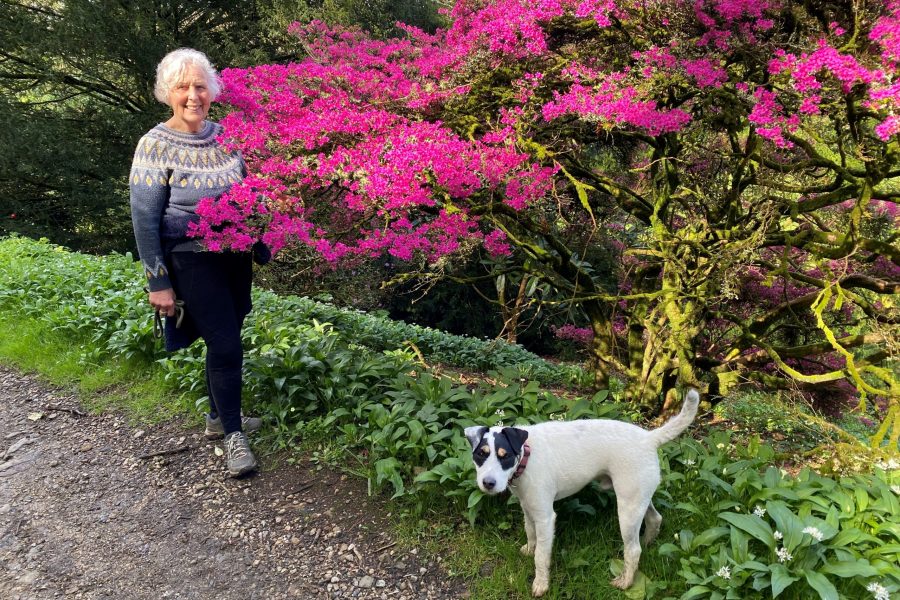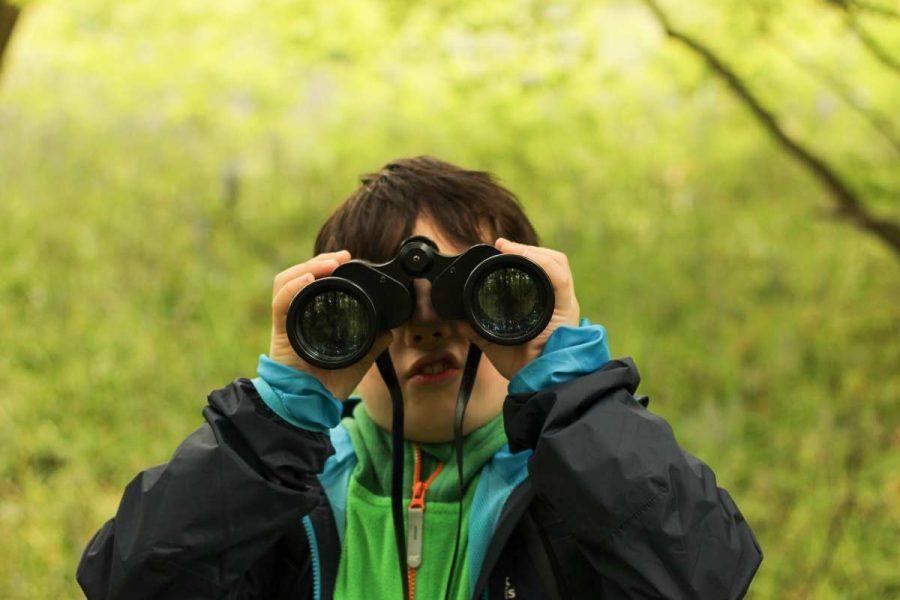For many of you driving into Bosinver, the pretty shape and golden leaves of our Golden Elm tree outside the laundry was a feast for the eyes.
As with many of the trees scattered around the site, it was a valued specimen tree.
Unfortunately, this did not save it from attack from the ravages of the Dutch Elm beetle. The disease seems to have originated in Asia and is caused by a fungi transferred from tree to tree by spores carried by elm bark beetles. These tiny 2.5mm long dark brown beetles breed in the bark of dead and dying elms and when a new beetle emerges from the bark in the spring they transfer it to healthy elms as they feed on the thin sappy twigs high in the leaf canopy. Symptoms occur in the early summer when leaves at the tips of the branches turn yellow and wilt. This progresses until at the end of the summer most of the foliage is brown and withered.
It is estimated that more than 60 million elm trees have been lost in the UK since the 1970’s and we have lost most of our mature elms at Bosinver. We were hoping that this little tree would survive as it was in the village rather than close to the others in the fields but alas it was struck down last summer and we knew we would have to fell it this year.
Lockdown has afforded us the luxury of time to deal with the felling and cutting up of the tree. We have managed to save a good part of the trunk and are planning to ‘plant’ it in the toddler play area to encourage tree climbing which is always good fun.
These photos of the day show Farmer Dave with his assistants Koben and Joe on the step-by-step journey of taking it down safely.
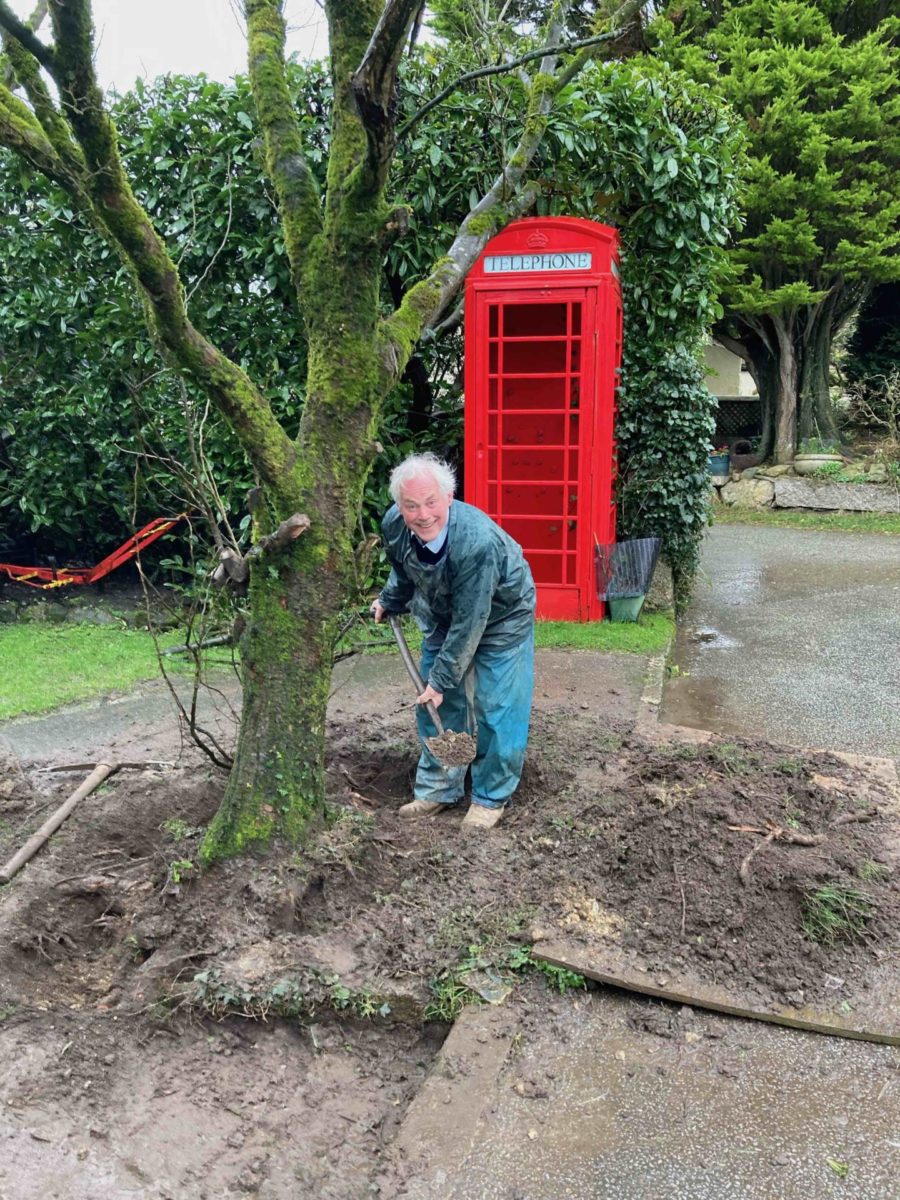
This process began with excavating the soil around the roots.
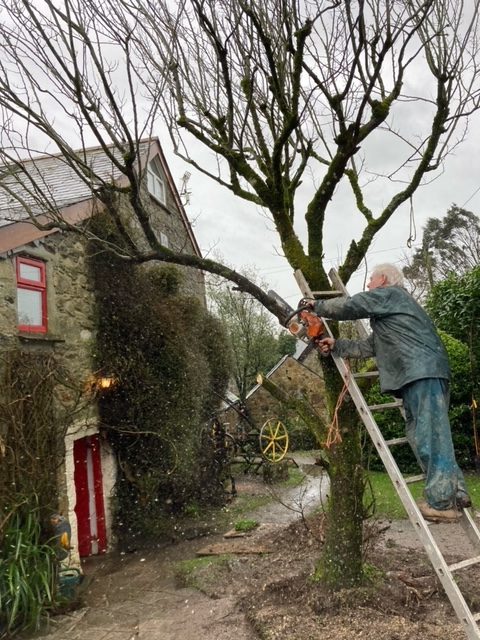
The next step was cutting off the accessible branches to lessen the weight.
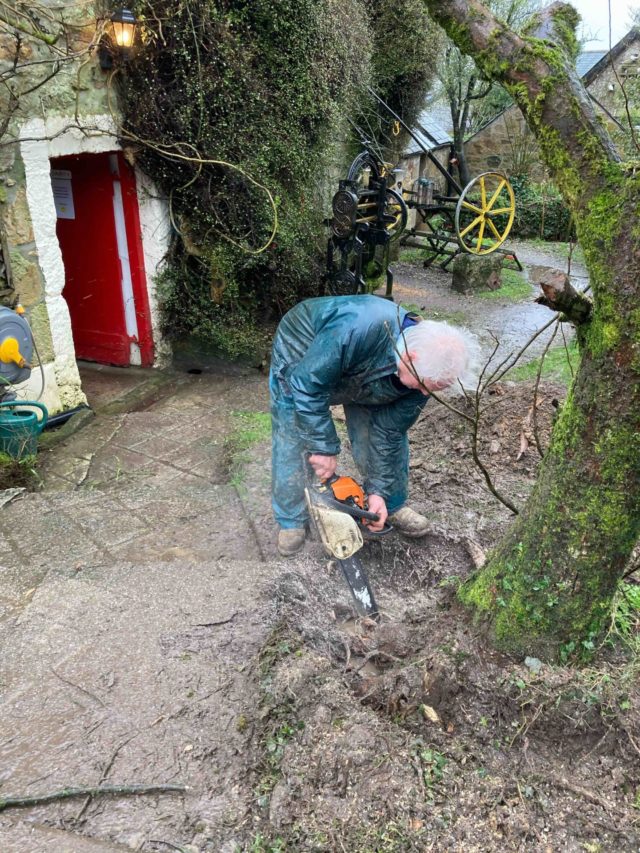
The next step involved Farmer Dave severing the big roots.

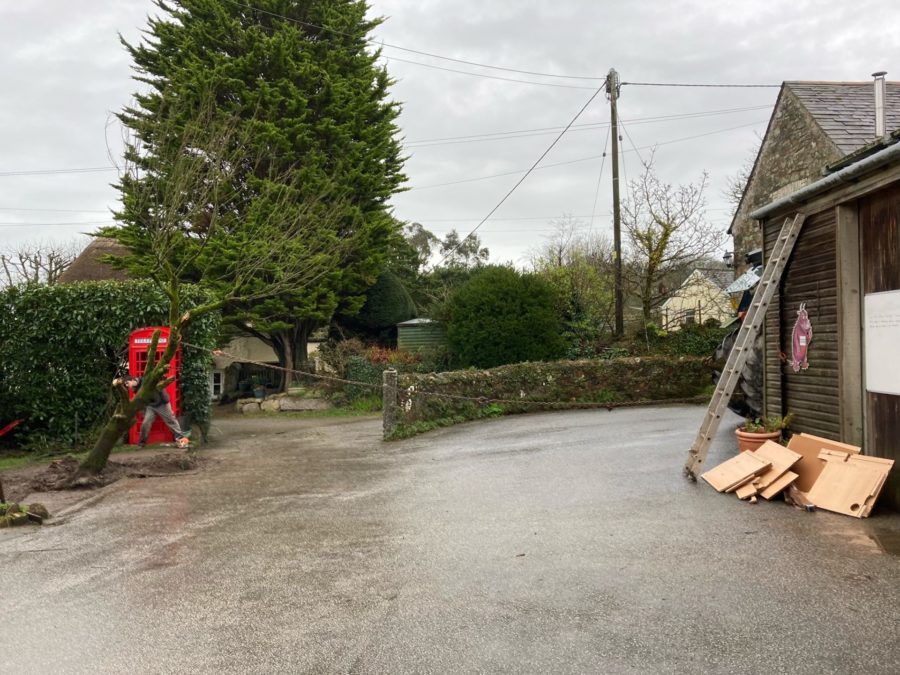
We then attached a chain from it to the tractor and pulling it over.
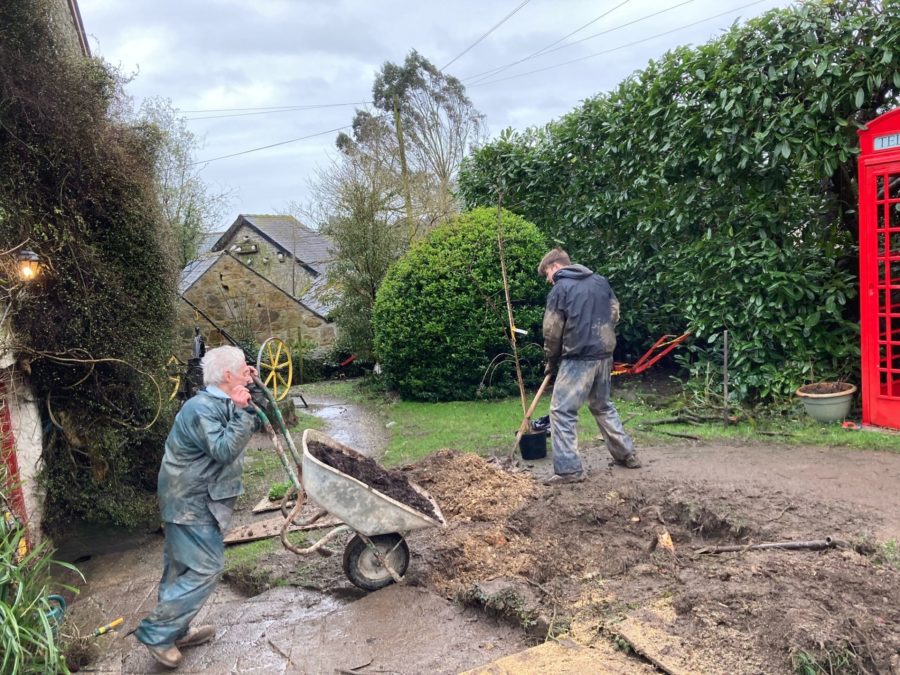
The tractor then levered the trunk roots out of the ground.
All that was left to do was cut up the branches and put them into the yard to season for a year or two before we cut them into fuel for your fires – nothing wasted here!
What next I hear you say? Well, one of Farmer Dave’s mantras is ‘Never cut down a tree without replacing it’ and I have been carefully looking for a beautiful tree which doesn’t grow too big and will attract lots of birds and wildlife.
I think I have found it in a gorgeous deep red Mallus or crab Apple tree called ‘Red Sentinel’.
Gardener’s World describes it as one of the most ornamental crab apple varieties, bearing pink/white flowers in late spring followed by masses of glossy round red fruit, providing year-round interest.
It is described as ‘attractive to wildlife’ known for attracting bees, birds, moths and caterpillars, providing shelter and habitat for many species. This lovely tree ticked all my boxes and I duly headed to what is in my opinion the best tree nursery in Cornwall Duchy Nursery just down the road in Lostwithiel to buy one. As soon as we had cleared the Elm, the Mallus went in and we are hoping that it will not only look resplendent but provide food and homes for wildlife as well as blush pink crab apple jelly for us when it matures.
With the growing awareness of the importance trees play in sequestering carbon to mitigate the effects of climate change, everyone is being encouraged to plant trees in their gardens or community areas.
Cornwall is planning to plant a ‘Forest for Cornwall’ – 8000 hectares of trees or 2% of Cornwall’s land area. Action Nan has been helping her parish council to plant trees and bulbs on roadsides and grass banks and we have planted over 1000 trees here since we came to Bosinver 22 years ago.
Can you help plant trees in your garden, school or village hall? As I’ve described, they don’t have to be massive – hedgerow trees such as hazel, blackthorn, hawthorn, wild pear, elderberry, quince and crab apples can all be planted in your garden in towns and suburbs to help feed our rapidly diminishing insects and birds.
Let’s all support the Countryfile ‘Plant Britain’ challenge and Get Planting!
Enjoy a break in Cornwall
If you would like to come down and see what has happened at Bosinver over the last year and enjoy a break in Cornwall, there are lots of things to do throughout the year. We’ve got a range of cottages which sleep 4-12 people and we’ve won many awards because we are passionate about sustainability – find out more and check availability.
What’s changed at Bosinver since you visited last? We’d love to hear from you on our Facebook page, Instagram @Action_Nan or tweet @ActionNan









